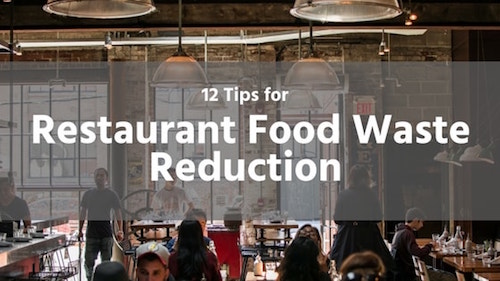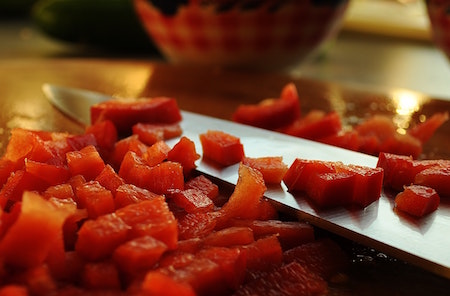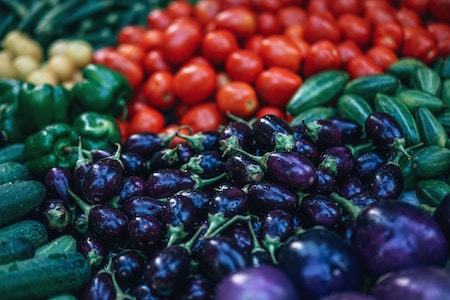
At restaurants, reducing food waste is often a big challenge. However, it’s one that must be addressed especially as operators grapple with the high costs of food.
According to the Food Waste Reduction Alliance, restaurants throw away about 85% of their unused food. This amount of food waste is, needless to say, an unnecessary cost for restaurants. With tight budgets, restaurants need to save money whenever and wherever possible.
That’s why in this article, we share 12 tried-and-tested tips for restaurant food waste reduction.
Tip #1: Only Buy What Is Necessary
Only buy produce on sale that you can definitely sell within a week. If you buy several cases of tomatoes or lettuce and you only need one per week, your run the risk of food spoilage.
Tip #2: Run Weekly Specials
You can quickly repurpose unused food before it ends up as waste using weekly specials and promotions.
You can use websites like MyFridgeFood and Supercook to get a recipe based on the ingredients at hand.
Tip #3: Check Your Inventory Regularly
If you’re wondering how to control food waste in your restaurant, start by checking your inventory regularly. By doing so, you can tailor your orders to vendors to only include what you’ll use in between deliveries.
To know the average number of days you hold inventory before selling it, you need to calculate inventory days on hand (DOH).

For instance, if you order 100 pounds of fillet and use 20 pounds of fillet every day, that fillet is ‘on hand’ for five days. (100/20=5)
Food items with lower inventory days on hand ratio mean they sell quickly. On the other hand, food items with a higher inventory day on hand ratio mean they aren’t selling quickly.
Tip #4: Store Foods Properly
A great way for restaurants to manage waste is through proper storage. It will extend the life of your inventory. Make sure that all food items are stored in an appropriate container and at the optimum temperature.
Also, ensure they are labelled properly. The label should state the date when they were received when they will expire, and the number of servings there are within the container.
Tip #5: Adopt the FIFO Method
To reduce the amount of spoilage in your restaurant, use the first-in/first-out method, also known as FIFO.
In a FIFO compliant kitchen, inventory will be organized and rotated so that the oldest items in your kitchen will be used first, cutting down on food waste as a result of spoiling.
Tip #6: Train Your Restaurant Staff to Reduce Food Waste
Teamwork makes the dream work. Educate both front of house and back of house staff about ways to reduce food waste.

Teach your prep cooks cutting techniques that keep food items fresher for longer. Also, teach them tactics and techniques that yield the most amount of product from a vegetable, a cut of meat, chicken, fish, or other produce items.
Tip #7: Regulate Temperatures for Beer and Wine
Beer and wine are still perishable even though they are not fresh per se. Wine can taste bitter and beer can have a “skunked” taste in an environment with fluctuating temperatures.
So, make sure your alcoholic drinks are stored in an area where the temperature is constant.
Tip #8: Inspect All Food Orders
Often cases of fresh produce will arrive at your restaurant ‘dead on arrival’. That is, they are either spoiled or well on their way. That’s why it’s important that all food orders are inspected.
If you can inspect them yourself, great! But if you can’t, make sure the person you delegate that responsibility to is fully aware that they can reject cases of spoilt veggies or wilted greens.
Tip #9: Consider Donating Food
A great way that restaurants can instill waste management is donating food. If you have items that are still safe for consumption, but for one reason or another, can’t be used, a local food bank may appreciate your contribution to feeding people in your community.
A program like Feeding America can help you in this regard.
Tip #10: Offer Staff Meals
If there is just a small amount of ingredients left that won’t be enough for another dinner service, you can give it to your staff for free. This will not only improve your staff morale, but it’ll also a great way to minimize food waste.
Tip #11: Go Green
Consider composting for those ingredients that you don’t catch in time. This reduces food waste that ends up in landfills and creates nutrient-rich soil to grow more organic products.

Tip #12: Install a POS System
POS systems allow the staff to take orders digitally rather than writing them down on paper to help reduce paper waste.
In addition, POS systems ensure the efficient tracking of inventory. The system will let you know exactly what you need to reorder next time and how much of it.
By using the 12 tips mentioned above, you will help keep food waste in your restaurant kitchen to a minimum. This can result to substantial cost savings, and a positive contribution to the environment.